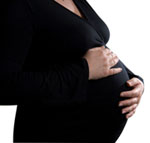
Balance your hormones and feel your best
While Western medicine considers the practice of women’s health to be limited to not much beyond pregnancy and pap smears, Chinese medicine has thousands of years’ history treating the intricacies, cycles, and complexities that make up the complete picture of health for women. For me, helping women to balance their hormones and feel their best is one of the most rewarding aspect of this work.
Menstrual irregularities
Menstrual irregularities may take various forms, from short cycle to long cycle, irregular periods, heavy periods, scanty periods, long periods, mid-cycle bleeding, painful periods or amenorrhoea (no period). Symptoms like PMS are also considered as a form of imbalance. Indeed, in a state of health and balance, women should not suffer from mood swings or painful periods and acupuncture has long been used to regulate periods, balance emotions and reduce pain.
Acupuncture can also help with PCOS, endometriosis or cysts and restoring balance would also help regulate your cycle if your period has stopped.
Articles
Coping with PMS: It’s that time of the month…again.
Menopause, a “secong spring”
In Chinese Medicine, the time around menopause is considered a transition into a new phase of life for women referred to as a “second spring”. This time represents a time of renewal of energies and opportunities, when the energy that a woman’s body has devoted to menstruation and reproduction can now be channelled into other creative areas of her life. In the West however, menopause has now too often become synonymous with an array of symptoms, from hot flushes to night sweats, anxiety, fatigue, irritability, mood swings, insomnia, depression, forgetfulness, weight gain or vaginal dryness among others.
These days many women are concerned about the risk factors associated with HRT (hormone replacement therapy) such as increased risk of breast cancer, cardiovascular disease and blood clots and Chinese medicine, with its long history of treating women’s hormonal conditions, offers a natural and safe alternative for relief of symptoms such as sleep disturbance, weight gain and hot flushes. Acupuncture can help encourage the body to adapt to the changes it is going through at the time of menopause so this phase of life needn´t be synonymous of illness but rather of renewal and “second spring” as the Chinese so poetically describe it. Along with acupuncture treatment, dietary therapy, herbal medicine, meditation and lifestyle suggestions may be used to reestablish balance.
You can also read our blog post:
Acupuncture Curbs Severity of Menopausal Hot Flushes
Pregnancy & Post partum

Once a woman has conceived, acupuncture can be further used to maintain a healthy pregnancy. It can help reduce the symptoms of morning sickness, constipation, back pain and sciatica, insomnia, fatigue, stress and anxiety.
In later stages of pregnancy, acupuncture can be used to turn a breech baby and to induce labour when a woman is passed her due date.
Pre-birth acupuncture
Pre-Birth Acupuncture from week 36 onwards (final 4 weeks of pregnancy) can help prepare a woman’s body for childbirth, mainly by preparing the cervix and pelvis for labour. Acupuncture treatment at this point in the pregnancy generally will help you feel more relaxed, boost your energy levels, stimulate blood circulation in the body, soften the ligaments and tendons prior to labour, and aid in cervical dilation.
Acupressure for labour
Research suggests that acupressure during labour can stimulate uterine contractions, reduce pain and shorten labour time. Click here for more information about acupressure for labour.
A closer look at the efficacy of acupuncture
Morning sickness
Smith et al in 2002 published research results on the use of acupuncture for nausea and vomiting in early pregnancy. They showed that acupuncture is an effective treatment for women who experience nausea and dry retching in early pregnancy.
Source: Acupuncture to treat nausea and vomiting in early pregnancy: a randomized controlled trial. Smith et al. Publimed Article.
Pelvic pain relief during pregnancy
A Swedish research showed that acupuncture and strengthening exercises help relieve pelvic girdle pain during pregnancy and are effective complements to standard treatment.
Source: British Medical Journal (2005, April 5). Acupuncture Relieves Pelvic Pain During Pregnancy. Article Science Daily.
Moxibustion treatment of breech presentation
A 2000 research showed that of 133 women presenting with breech presentation at the 28th week, 93% of them underwent cephalic presentation with the use of moxibusion (vs. 72% in the control group).
Source: Yoichi Kanakura “Moxibustion Treatment of Breech Presentation”. American Journal of Chinese Medicine. Full article.
Pre-birth acupuncture
A New Zealand study has shown that with pre-birth acupuncture there was a 43% reduction in the induction rate as most women would go into spontaneous labour around their due date. In addition, labour duration in the group receiving pre-birth acupuncture was reduced from 8hrs 2 mins in the control group to 6hrs 36 mins, and women also tended to require less medical intervention (medical induction, epidural, caesarian section).
Source: Betts D, Lennox S. “Acupuncture for prebirth treatment: An observational study of its use in midwifery practice.” Medical acupuncture 2006 May; 17(3):17-20 Full article.
